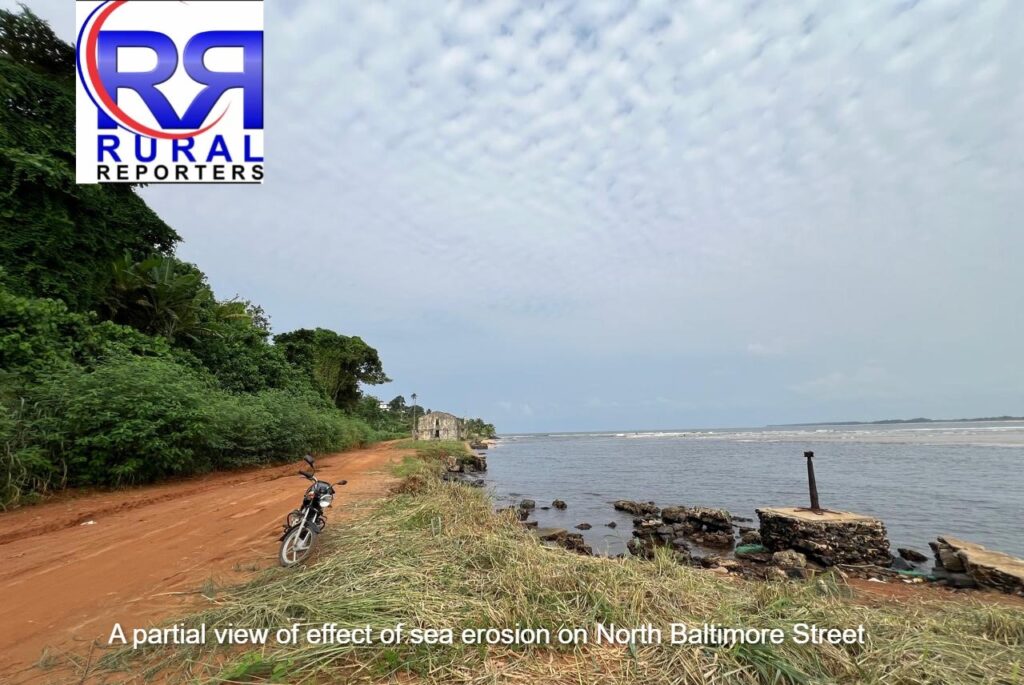By Rocheford T. Gardiner
Cape Palmas – A critical access point to Liberia’s south easternmost port in Harper is rapidly eroding, threatening to cut off vital trade routes and deprive the Government of Liberia (GoL) of crucial revenue.
What began two decades ago as a minor crack in the retaining wall protecting North Baltimore Street, the sole road to Harper Port, has now dramatically worsened, with close to a third of the wall already consumed by the sea.
During a visit on Sunday, 6 July, it was observed that only about 11 meters of usable road space remain.
The relentless tides at the mouth of the Hoffman River are steadily wearing down the dirt road’s protective barrier, creating an alarming situation for the region.
Local governance under scrutiny
The local administration in Cape Palmas has remained silent on the issue. Particularly Superintendent Henry Cole, has faced criticism from local media for what most journalists describe as his “unfriendly” posture and at times hostile stance, leading to a perceived standstill in local government activities within the county.
Missed opportunity for repair
Hopes for addressing the deteriorating road were briefly raised during a “quick impact” project. This initiative, sponsored by Senator James Biney and Harper District #1 Representative P. Mike Jurry, two members of the county’s Legislative Caucus, rehabilitated other dirt roads in Harper, the county’s capital.
However, public disappointment quickly followed when it became clear that the critical North Baltimore Street retaining wall was not captured in the project at the time.
Port’s crucial role at risk
North Baltimore Street is the only access point for heavy-duty vehicles transporting goods in and out of Harper Port. This includes significant exports like palm oil from the Golden Veroleum oil palm company, a key source of government revenue generation.
Beyond exports, Harper Port also serves as an alternative route for essential goods and services to Maryland and the neighboring Grand Kru and River Gee Counties, especially when land access becomes difficult during the rainy season. The potential closure of this road would severely impact these areas.
Compounding structural issues
Adding to the precarious situation, an overhead bridge, designed for lighter vehicles, is also showing signs of structural compromise.
Constant exposure to the elements, pounding salt winds, and humidity from the Atlantic Ocean appear to have taken a significant toll, indicating the bridge may have reached the end of its lifespan.
If North Baltimore Street is fully cut off, it would halt all heavy-duty transportation to and from the port, leading to a substantial loss of revenue from palm oil exports and causing considerable inconvenience for smaller businesses, institutions, and the local communities across the three affected counties.



